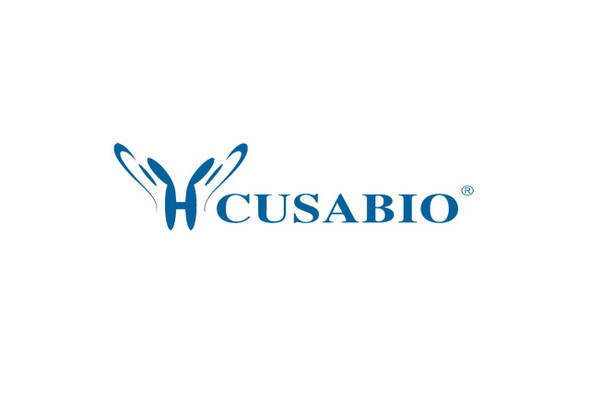Cusabio Virus & Bacteria Recombinants
Recombinant Influenza C virus Hemagglutinin-esterase-fusion glycoprotein (HE), partial | CSB-YP365951IKD
- SKU:
- CSB-YP365951IKD
- Availability:
- 25 - 35 Working Days
Description
Recombinant Influenza C virus Hemagglutinin-esterase-fusion glycoprotein (HE), partial | CSB-YP365951IKD | Cusabio
Alternative Name(s): HE; Hemagglutinin-esterase-fusion glycoprotein; HEF; EC 3.1.1.53) [Cleaved into: Hemagglutinin-esterase-fusion glycoprotein chain 1; HEF1); Hemagglutinin-esterase-fusion glycoprotein chain 2; HEF2)]
Gene Names: HE
Research Areas: Others
Organism: Influenza C virus (strain C/California/1978)
AA Sequence: EKIKICLQKQVNSSFSLHNGFGGNLYATEEKRMFELVKPKAGASVLNQSTWIGFGDSRTDQSNSAFPRSLMSAKTADKFRSLSGGSLMLSMFGPPGKVDYLYQGCGKHKVFYEGVNWSPHAAIDCYRKNWTDIKLNFQKSIYELASQSHCMSLVNALDKTIPLQVTKGVAKNCNNSFLKNPALYTQEVKPLEQICGEENLAFFTLPTQFGTYECKLHLVASCYFIYDSKEVYNKRGCGNYFQVIYDSSGKVVGGLDNRVSPYTGNSGDTPTMQCDMLQLKPGRYSVRSSPRFLLMPERSYCFDMKEKGPVTAVQSIWGKGRKSDYAVDQACLSTPGCMLIQKQKPYIGEADDHHGDQEMRELLSGLDYEARCISQSGWVNETSPFTEEYLLPPKFGRCPLAAKEESIPKIPDGLLIPTSGTDTTVTKPKSRIFGIDDLIIGLLFVAIVEAGIGGYLLGSRKESGGGVTKESAEKGFEKIGNDIQILRSSTNIAIEKLNDRISHDEQAIRDLTLEIENARSEALLGELGIIRALLVGNISIGLQESLWELASEITNRAGDLAVEVSPGCWIIDNNICDQSCQNFIFKFNETAPVPTIPPLDTKIDLQSDPFYWGSS
Source: Yeast
Tag Info: N-terminal 6xHis-tagged
Expression Region: 15-629aa
Sequence Info: Extracellular Domain
MW: 70.1 kDa
Purity: Greater than 90% as determined by SDS-PAGE.
Relevance: Binds to the N-acetyl-9-O-acetylneuraminic acid residues on the cell surface, bringing about the attachment of the virus particle to the cell. Plays a major role in the determination of host range restriction and virulence. Class I viral fusion protein. Responsible for penetration of the virus into the cell cytoplasm by mediating the fusion of the mbrane of the endocytosed virus particle with the endosomal mbrane. Low pH in endosomes induce an irreversible conformational change in HEF2, releasing the fusion hydrophobic peptide. Several trimers are required to form a competent fusion pore. Displays a receptor-destroying activity which is a neuraminidate-O-acetyl esterase. This activity cleaves off any receptor on the cell surface, which would otherwise prevent virions release. These cleavages prevent self-aggregation and ensure the efficient spread of the progeny virus from cell to cell .
Reference: Influenza C virus hemagglutinin comparison with influenza A and B virus hemagglutinins.Nakada S., Creager R.S., Krystal M., Aaronson R.P., Palese P.J. Virol. 50:118-124(1984)
Storage: The shelf life is related to many factors, storage state, buffer ingredients, storage temperature and the stability of the protein itself. Generally, the shelf life of liquid form is 6 months at -20?/-80?. The shelf life of lyophilized form is 12 months at -20?/-80?.
Notes: Repeated freezing and thawing is not recommended. Store working aliquots at 4? for up to one week.
Function: Binds to the N-acetyl-9-O-acetylneuraminic acid residues on the cell surface, bringing about the attachment of the virus particle to the cell. Plays a major role in the determination of host range restriction and virulence. Class I viral fusion protein. Responsible for penetration of the virus into the cell cytoplasm by mediating the fusion of the membrane of the endocytosed virus particle with the endosomal membrane. Low pH in endosomes induce an irreversible conformational change in HEF2, releasing the fusion hydrophobic peptide. Several trimers are required to form a competent fusion pore. Displays a receptor-destroying activity which is a neuraminidate-O-acetyl esterase. This activity cleaves off any receptor on the cell surface, which would otherwise prevent virions release. These cleavages prevent self-aggregation and ensure the efficient spread of the progeny virus from cell to cell.
Involvement in disease:
Subcellular Location: Virion membrane, Single-pass type I membrane protein, Host cell membrane, Single-pass type I membrane protein
Protein Families: Influenza viruses hemagglutinin family
Tissue Specificity:
Paythway:
Form: Liquid or Lyophilized powder
Buffer: If the delivery form is liquid, the default storage buffer is Tris/PBS-based buffer, 5%-50% glycerol. If the delivery form is lyophilized powder, the buffer before lyophilization is Tris/PBS-based buffer, 6% Trehalose, pH 8.0.
Reconstitution: We recommend that this vial be briefly centrifuged prior to opening to bring the contents to the bottom. Please reconstitute protein in deionized sterile water to a concentration of 0.1-1.0 mg/mL.We recommend to add 5-50% of glycerol (final concentration) and aliquot for long-term storage at -20?/-80?. Our default final concentration of glycerol is 50%. Customers could use it as reference.
Uniprot ID: P03465
HGNC Database Link: N/A
UniGene Database Link: N/A
KEGG Database Link: N/A
STRING Database Link: N/A
OMIM Database Link: N/A









